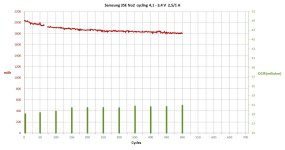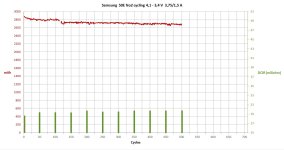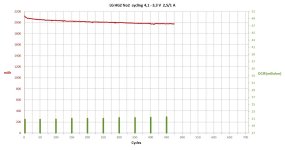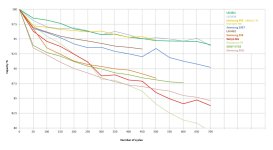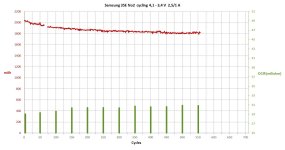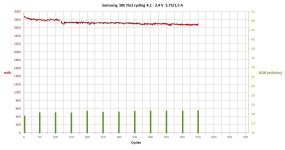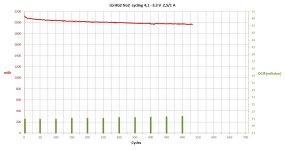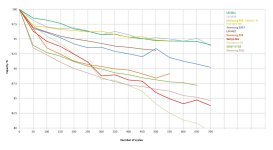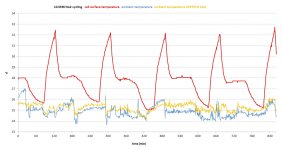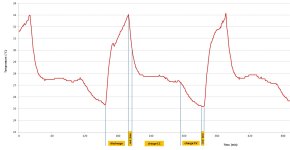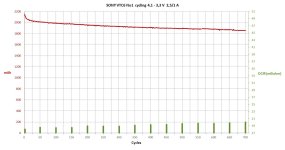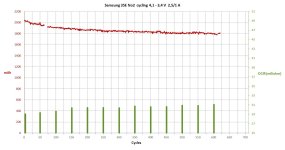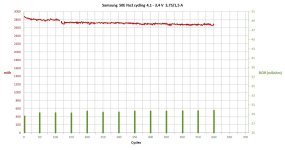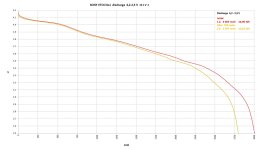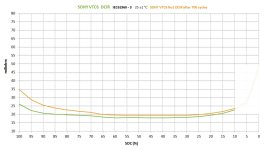Pajda
10 kW
That is true, they does not like 0.5C charging rate, the same as GA which is slightly better. On the other side M36 and MJ1 are completely fine at 0.5C. But still 0.3C for 35E (aka 1A per cell) is ok. This value of charging current is recomended in datasheet and I got good results at 0.3C as well.Dak77 said:I think I remember reading a while back that 35E is very sensitive to charge current , so they may be very decent when charged at low rates around 500-700ma . Just a hunch.



